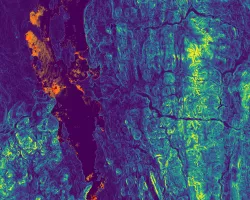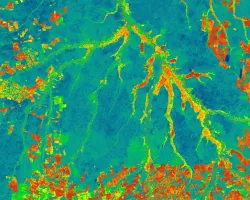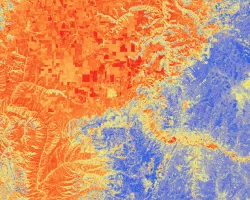Idaho & Oregon Agriculture (2024 Spring)
Team: Garret Weichel (Project Lead), Aarushi Jhatro, Jack Hagenbuch, Hannah Willis
Summary: The practice of night penning, which involves corralling livestock into a fenced, secure area overnight, aims to safeguard animals from predators. Although this method has proven successful in minimizing interactions between livestock and wildlife, the extent of its impact on vegetation communities is still being explored. This project examines the feasibility of using Net Primary Productivity (NPP) values from the Rangeland Analysis Platform (RAP) to quantify the impacts of night penning on rangeland vegetation communities. RAP provides spatially distributed values of vegetation composition, cover, and productivity, and is derived from imagery from Landsat 5, Landsat 7 & Landsat 8 at a 30m resolution for rangelands across the United States. Our DEVELOP team partnered with Alderspring Ranch, Krebs Livestock, and the U.S Department of Agriculture Animal & Plant Health Inspection Service (APHIS) to analyze the impacts of night penning on vegetation communities. We identified control sites that captured the topographic characteristics of night pen sites used by our partners. We then quantified and compared changes in annual NPP between night pen and control sites. Our analysis of RAP NPP data, using a control-treatment design did not find impacts of night penning on vegetation. However, this was a preliminary analysis, and does not conclusively quantify the impacts of night penning on rangeland vegetation. Our analysis indicated that RAP may be a feasible tool to study livestock management impacts on rangeland vegetation; however future studies are suggested to further assess these findings with additional ground observations.



